The Western World
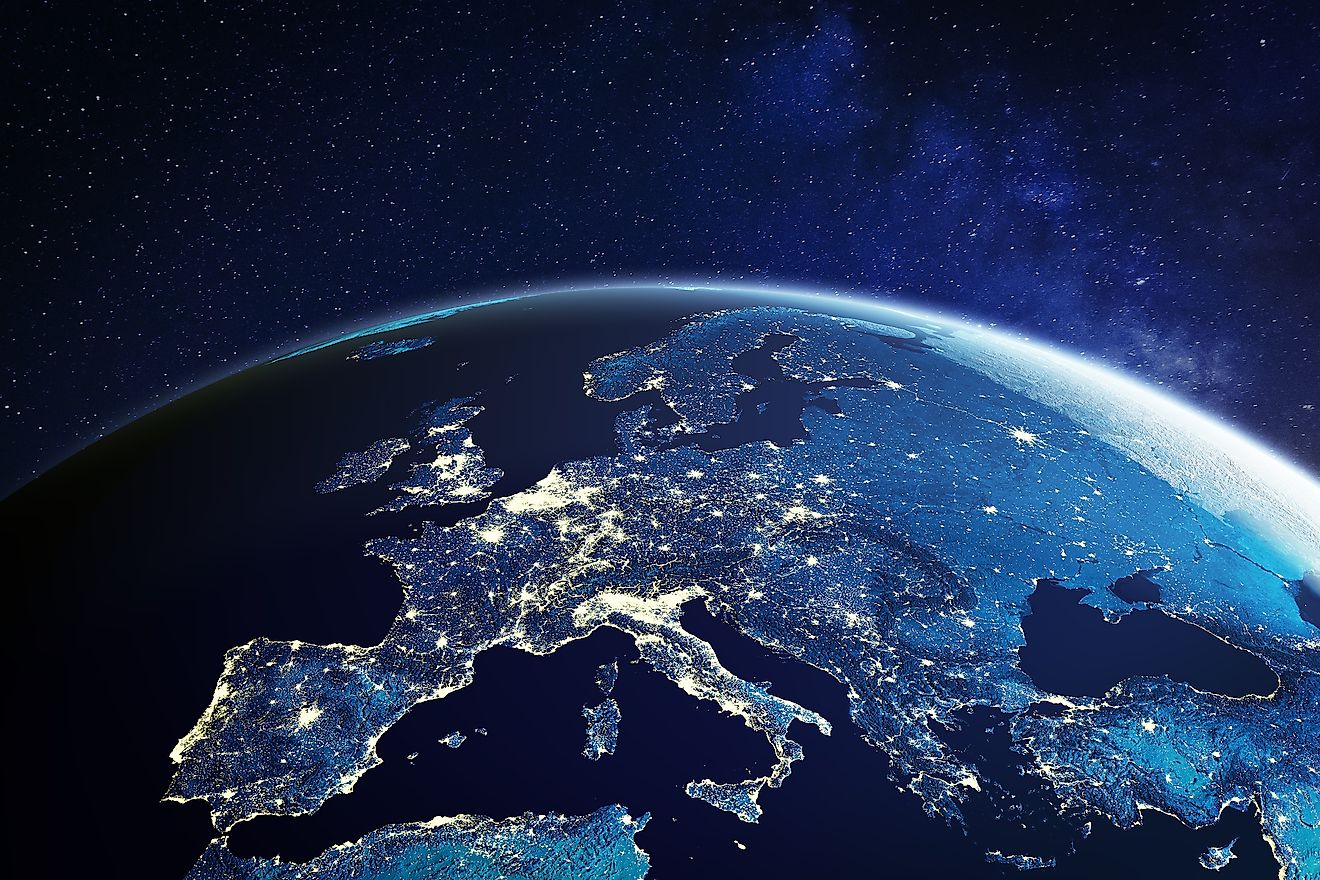
- The concept of the West or the Western World originated in the Greco-Roman Civilizations of ancient times.
- The term, "West" comes from the Latin term, "occidens", which means sunset or west, as opposed to "oriens", meaning rise or east.
- The West or Western World can be defined differently, depending on the context.
- Western Civilization is identified with certain periods of history, such as the Renaissance, the Age of Enlightenment, the Scientific Revolution, and the Industrial Revolution.
The term, “The West”, or “The Western World” is something that is often mentioned in the context of politics, history, and culture. But what exactly is the West? Which countries are part of the Western World? Historically, the concept of the West originated in the Greco-Roman Civilizations of ancient times, and evolved over many centuries. Defining the West today, however, can be difficult, because the definition of it can change depending on the context. From a political standpoint, the borders of the Western world have changed over time. What people generally thought of as the West after World War II, for example, is different from what many folks would define as the Western world today. In addition, defining the West in political terms is very much different than defining the Western world in cultural terms.
The Concept Of The West History
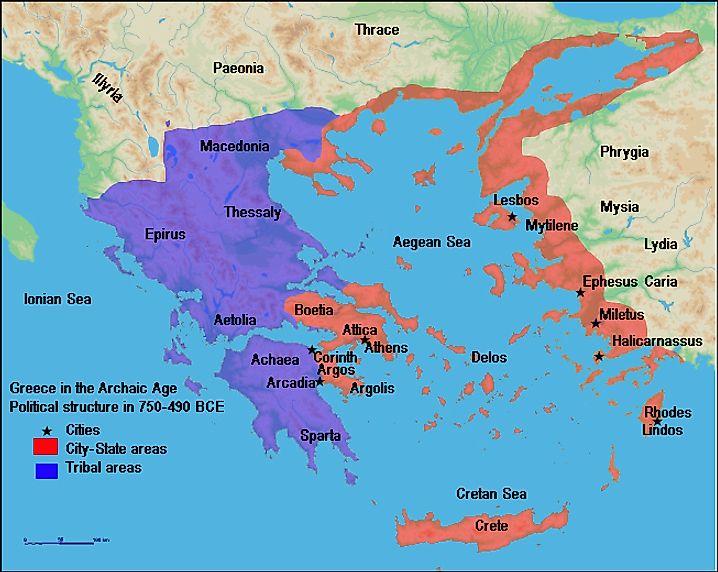
The concept of the Western world, as opposed to other parts of the world, was born in ancient Greece, specifically in the years 480-479 BCE, when the ancient Greek city states fought against the powerful Persian Empire to the east. The Greeks thought of themselves as freedom-loving people, as opposed to the Persians, whom the Greeks believed were despotic. The Greeks were heavily outnumbered by the Persians, yet emerged victorious.
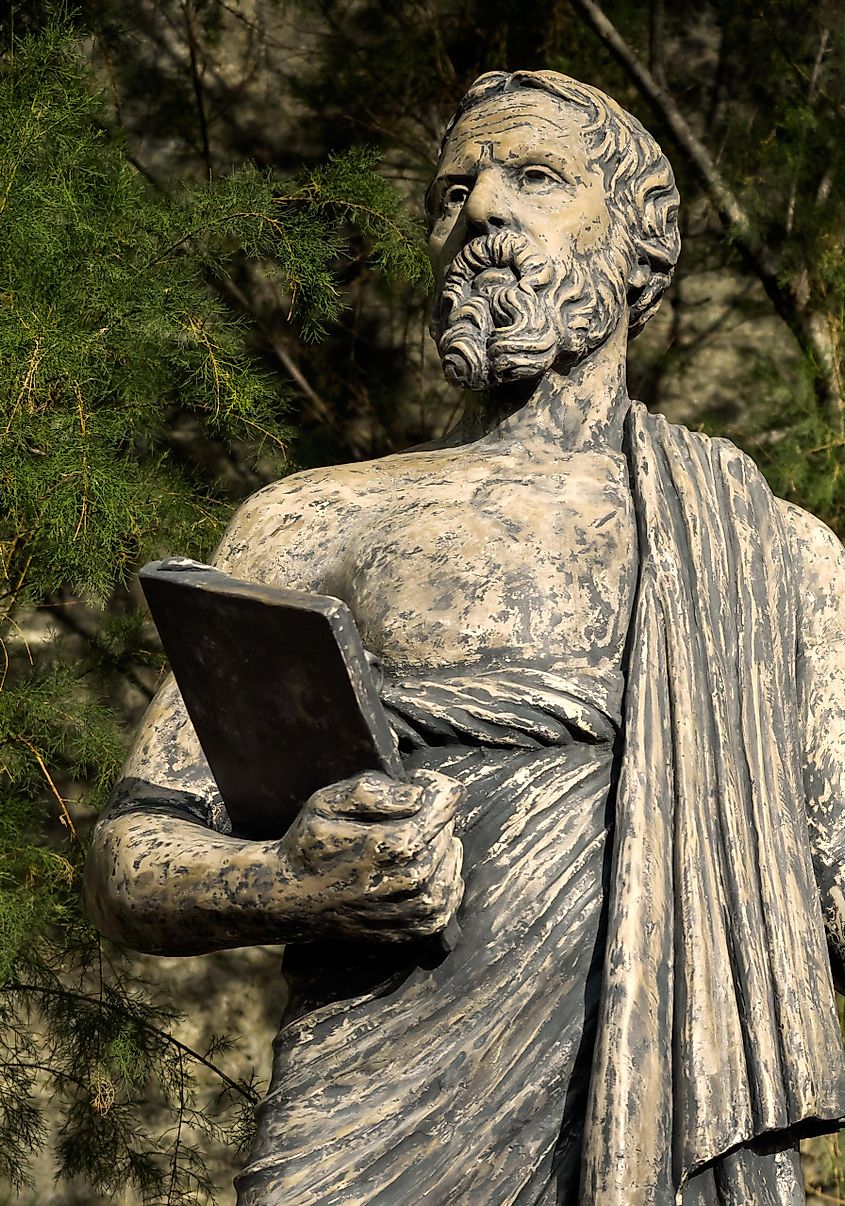
The ancient Greek historian Herodotus explained that the Greeks defeated the Persians against overwhelming odds because free people fight better than what he called “slaves”. This classical explanation of the Greek victory over the Persians was echoed over the course of ancient history in the Mediterranean region. It was the birth of the idea that the only life worth living was one of freedom. This idea of freedom winning out over despotism was written into many classical texts. It also appeared in the theater and poetry of ancient Greece and Rome.
It is from the Romans that the geographical context of the West comes into play. The Romans considered themselves to be of the “occidens”, or occident, which is Latin for “sunset” or “west”, as opposed to the “oriens” or orient, which means “rise” or “east”.
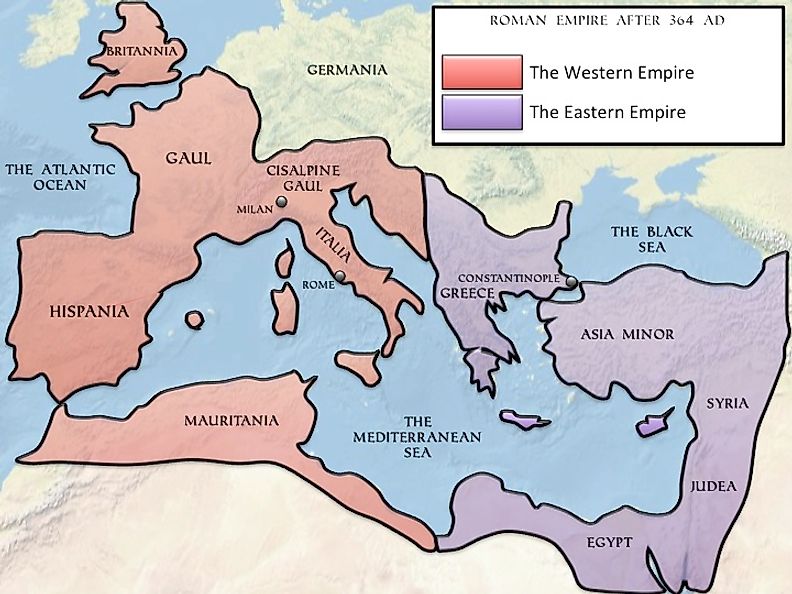
The concept of the West took on a more geographical context in the 4th century CE, when the first Christian Roman emperor, Constantine, divided the Roman Empire between east and west. About a century and a half later, the West Roman Empire fell, but the East Roman Empire, later called the Byzantine Empire, would continue for another millennium. As a result, many people in Western Europe envied the east, and considered the Christians of the Byzantine Empire to be heretics. In 1054, the division between the Christianity of the east and that of the west boiled over, when the church in Rome excommunicated the Patriarch of Byzantium in what was known as the Great Schism. From this point onward, the European Christian church was split into two major branches: The Roman Catholic Church in the West and the Eastern Orthodox Church in the East.
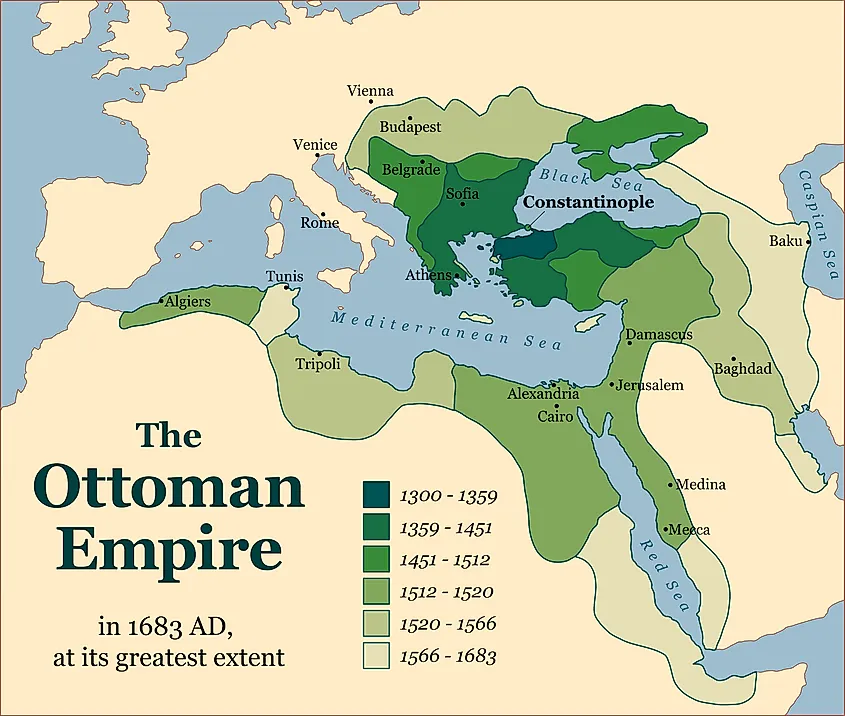
Three centuries later, the period of the Renaissance began in Western Europe. It was during this time that the classical texts of ancient Greece and Rome were revived, and with them the idea of freedom overcoming despotism. This idea permeated throughout Western Europe. At the same time, the people of Western Europe saw the Muslim Ottoman Empire to the east as a threat to their freedom-loving, Christian way of life. Indeed, it was the expansion of the Ottoman Empire that motivated the rulers of Western Europe to look for new trade routes and resources.
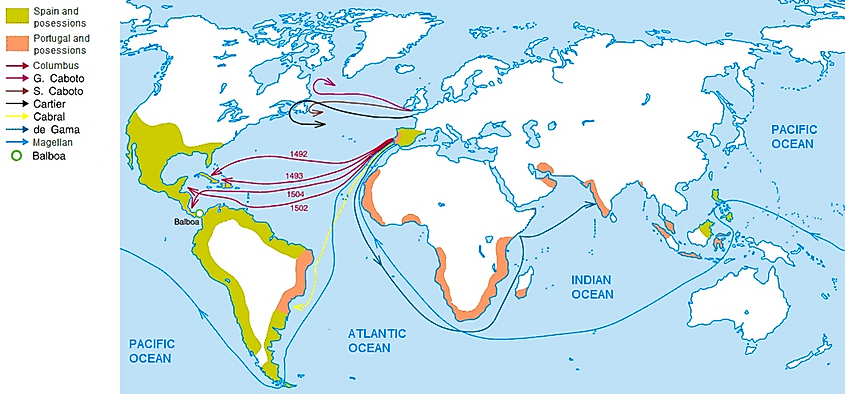
Thus began the Age of Exploration, also known as the Age of Discovery, when so-called Western Civilization would expand beyond Europe to different parts of the world. Other historical periods, such as the Age of Enlightenment, the Scientific Revolution, and the Industrial Revolution, were all centered in Western Europe, and so the ideas of these periods became synonymous with Western Civilization.
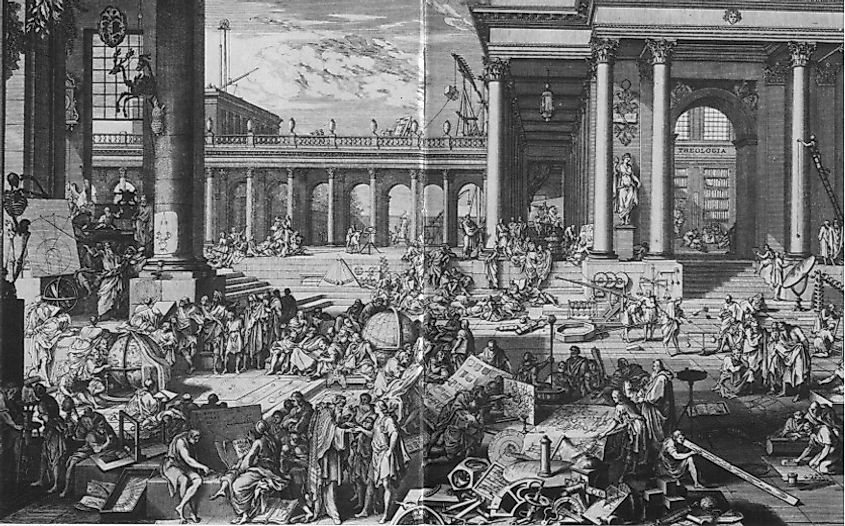
In the 20th century, the political definition of what constituted the West changed several times. Between 1870 and 1945, Germany, despite the contributions of many Germans to the development of Western Civilization, was considered hostile to great Western powers, Britain and France, and therefore not considered part of the West from a political standpoint. Thus, the unseen border of the West was in Central Europe. The situation was similar during the Cold War, from 1945 to 1989, as the Iron Curtain was the de facto border separating the capitalist, democratic West and the communist East.
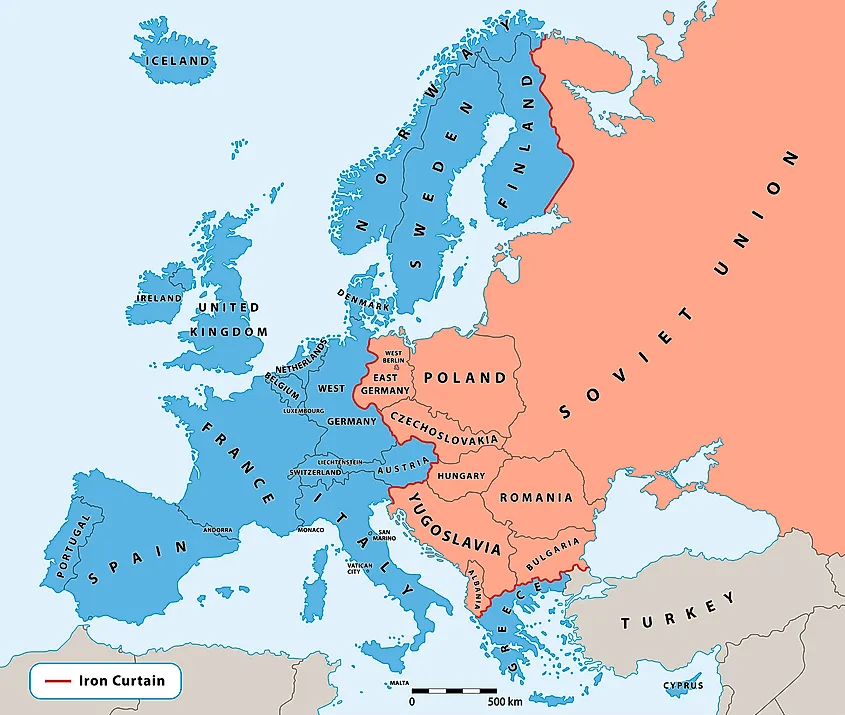
But when the Iron Curtain fell, the political idea of East vs. West was much less relevant. Indeed, the fall of the Iron Curtain was celebrated by many as the reunification of Europe. Moreover, as more countries that were formerly part of the communist Eastern bloc join the European Union and NATO, what is identified as the Western World in a political sense now includes most of Europe, right up to the western borders of Russia.
The Concept Of The West Today
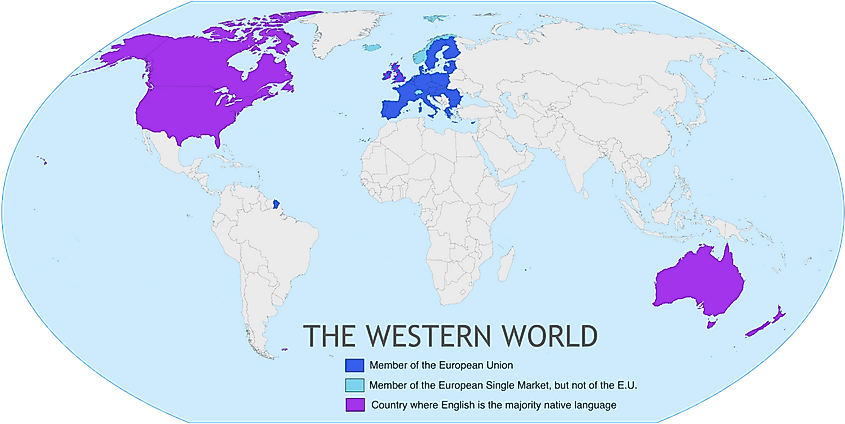
In the contemporary world, the West can mean different things, depending on perspective. If, for example, the West is defined by a certain set of values, then it is possible to argue that all the countries of the world that share so-called Western values belong to the West, even if they are geographically not part of the West. Thus, Japan could be considered part of the West because it maintains a Western-style democracy, even though it is located in the Far East. At the same time, Cuba still clings to communism, and it is argued by many that the ruling regime of Cuba does not hold so-called Western values, even though it is geographically in the Western Hemisphere. Therefore, in this context, the term “The West”, or “The Western World” does not hold a geographic connotation.
Defining the West in a cultural context, however, would be different. For instance, the West in the 18th and 19th centuries was largely defined as Western Europe and its colonies. Yet, the music of Tchaikovsky, who hailed from Russia, would generally be considered Western-style music, even if Russia has historically and politically not been considered part of the West. Thus, what constitutes the West from a cultural standpoint is different from the West in the perspective of politics or history.
To make a long story short, the terms “The West” and “The Western World” have definitions that are fluid; definitions that depend on the time period and on the perspective from which someone chooses to view the world.











